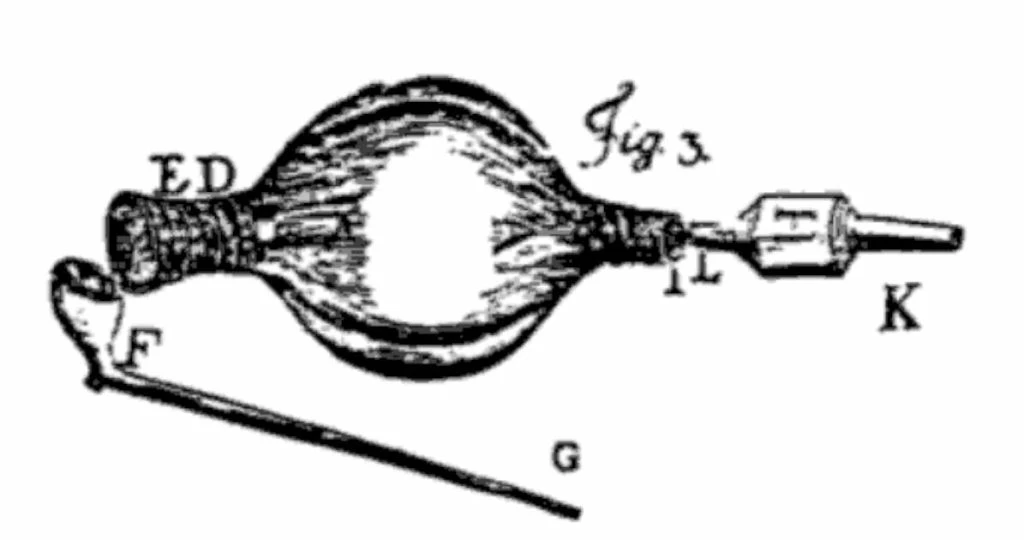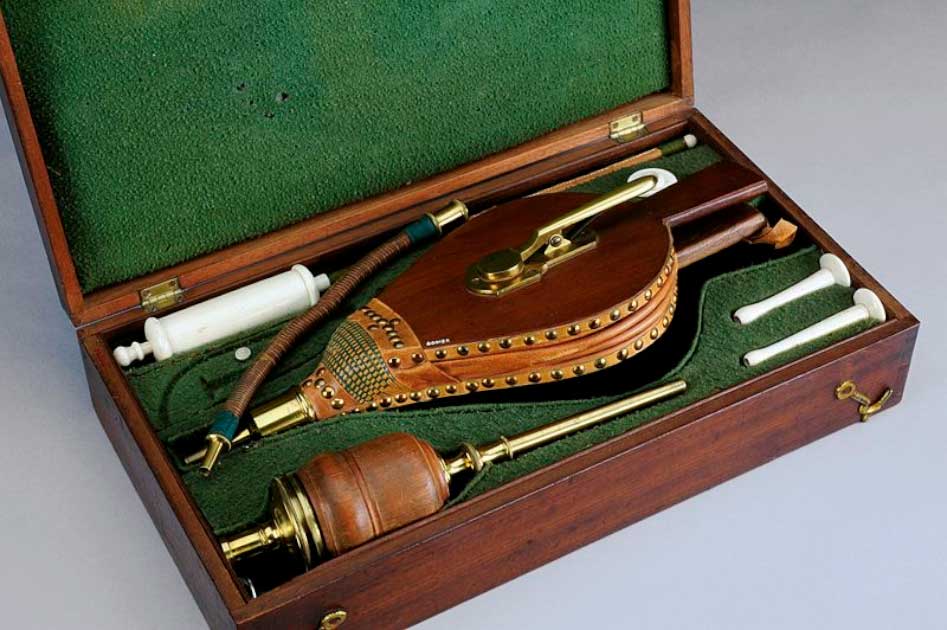Today, the words “blowing up smoke your a**” are considered a form of flattery, that relates to stoking someone’s ego. The words are said to point out insincere compliments that only inflate a person’s head with insincere compliments.
Alarmingly however, at one time the words had a much more literal meaning, and in the 18th century it was considered best medical practice for a range of conditions. practice of blowing up smoke up a person’s backside by a doctor. In fact, the practice of blowing smoke up the backside was believed by many doctors to have multiple benefits for the body.
In fact, in extremities doctors were said to have tried reviving nearly dead people by blowing smoke up their backsides. This practice is now extinct and sounds weird when compared with modern medicine. However, in the 1700s, people used to treat it as a normal medical procedure.
Welcome to the Tobacco Enema
The process was so prevalent that many hospitals and public places had the equipment used specifically for the process. The practice was particularly used for reviving people from drowning incidents, and other accidents where there was no immediate sign of life.
The procedure was considered so straightforward and effective that equipment for blowing smoke, pipe, nozzle and all, was often hung near major waterways and reservoirs where it could be easily accessed when necessary. People who frequented the riverside and traveled through waterways would know the location of this equipment so that they could help a dying man.
And there are, bafflingly, reports of the successful use of such a procedure in reviving patients. One of the earliest reports of the successful use of this method on an unconscious person comes from England in 1746, where it was used to bring back an unconscious woman to her senses.
This woman had fallen in a body of water and was thought drowned, and people were unable to bring her back to her senses. It was when a tobacco enema was performed on her that she was revived.

It seems that her husband, in desperation and running out of methods to revive his beloved wife, took a tobacco-filled pipe and inserted the stem into her backside. He then took the mouth of the pipe in his mouth and blew a few puffs of tobacco smoke into the bottom of the poor unconscious woman.
- Heroin Cough Medicine? The Rise and Fall of Patent Medicine
- Medicine, Cannibalism and Honey: Who, Or What, Was The Mellified Man?
According to onlookers and witnesses, the process worked, and the woman became fully conscious shortly after. From this instance, the popularity of the whole process grew, and even doctors used it to revive patients. Why the husband thought this was a good idea and not just some passing madness is not recorded.
They Got Really Good At It…
Although today, tobacco is seen as extremely harmful and a dangerous carcinogen, the 1700s was not the first era in which the substance was used as a medicine. Like many other plant products, tobacco was also used in medicine throughout history.
In fact, many Native American tribes used to put tobacco as a medicinal ingredient in many cures for ailments. Moreover, the practice of tobacco enema was even said to be first invented by them as a cure for many ailments.
Nicholas Culpeper, an English Botanist, observed these practices from Native American tribes and introduced them to European society as a way to treat common pain with different types of enema. The method was first used to treat common ailments and inflammation like hernia and colic in adults.
From Nicholas Culpeper, the practice of herbal enema was borrowed by another English physician by the name of Richard Mead. Although the fame of tobacco enema was short-lived, according to historical accounts, these methods were very effective for revival. In fact, there could have been many scientific reasons behind the success of tobacco enema.
With the development of specialist equipment, guides for the introduction of tobacco into the anus and testimony as to its efficacy, doubtless these medical men thought they have stumbled on a new treatment for almost anything. However, were they as mistaken as all that?
Is There Any Science to the Tobacco Enema?
Perhaps the doctors were not as wrong as it seems. For example, a tobacco enema would increase the heart rate of the patient as the nicotine is absorbed. This could potentially revive a person who is unconscious, essentially kick-starting their metabolism.

A tobacco enema was also believed to have a positive impact on respiration, which is very necessary for the revival and recovery of a drowned or asphyxiated individual. On the other hand, the smoke had a drying-out effect on the insides of the person.
- Mummia Medicine: Did Europeans Eat Ancient Egyptian Mummies?
- The Poison Squad Trials: Do You Know What’s In Your Food?
The drying out effect was thought to get rid of excess water in the body of a drowned person, although here we are on shakier medical ground. Therefore, blowing smoke up the bottom of a drowned individual would revive him and return his vitals to normal, according to the medical thinking.
The tobacco enema was so popular at one time that doctors would blow smoke through a pipe into the body of a nearly dead person instead of performing mouth-to-mouth revival that sent air directly into the lungs. In addition, there were specifically designed pipe systems for tobacco enema so that doctors could easily perform it on dying patients.
However, before such systems, doctors or caregivers would administer smoke with the help of a standard smoking pipe, hopefully one they were not intending to keep using afterwards. It also does not seem long enough to comfortably administer a tobacco enema to patients.
There were actual medical risks for the doctor in using such a short pipe, as well. The procedure performed this way brought doctors into very close contact with the patient’s anus. There was a higher chance of cholera contamination and other infections because of this.
Moreover, doctors would often report the smell of bad, noxious gases released from the anal cavity of the patient due to the short stem and proximity of the nose to the anus. Frankly, the most surprising thing about this was that they weren’t already aware.
A Great Idea for a Little While
The tobacco enema was so popular in the late 1700s that in the year 1774 The Institution For Affording Immediate Relief To Persons Apparently Dead From Drowning was founded, which was particularly dedicated to the treatment of inflammation with tobacco enema. It was also a place where drowned people were brought for fast revival.
The institution was later renamed the Royal Humane Society. The institution rewarded people who were actively working to save human lives and resuscitation of people. The institution is still in operation today under the authority of the Queen of England. However, the tobacco enema is rarely performed by modern doctors, which everyone agrees is probably for the best.
No matter how disgusted and shocked we may be by the literal practice of blowing smoke up someone’s a**, it might have worked at one time and had some benefits for people. Weirder things have been done in the name of medical science, and perhaps with the stimulative effects of tobacco the doctors were on to something, after all.
Top Image: A tobacco enema was found to be surprisingly effective at reviving unconscious patients. Source: Svetlana Lukienko / Adobe Stock.
By Bipin Dimri